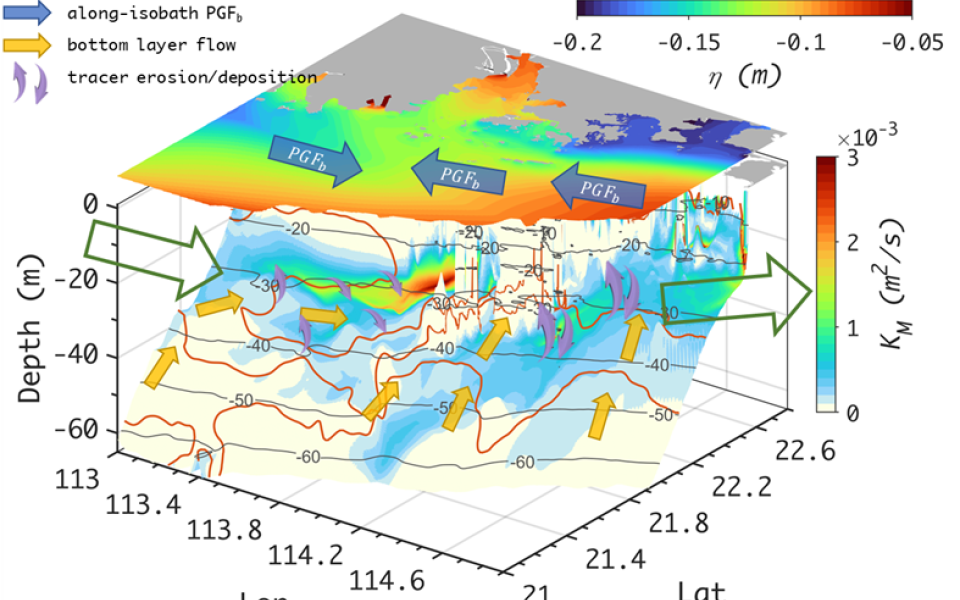Variability of the bottom boundary layer induced by the dynamics of the cross-isobath transport over a variable shelf
Background:
The bottom boundary layer (BBL) is a thin, turbulent layer of water above the seafloor that plays an important role in regulating the transport of sediment and other substances, as well as the energy and momentum balance in shallow shelf waters. Flow-induced bottom stress forms the turbulent BBL. Stratification limits the boundary layer height, compared with classic Ekman theory, by consuming turbulent kinetic energy and limiting turbulent mixing length scales. The vertical velocity shear-generated turbulence competes with stratification damping to control how the flow-induced turbulent BBL develops. The development of the BBL determines the substance exchange between the seafloor and water column, which has further influence on the biogeochemical processes especially for the bottom layer water, modulating the occurrence and intensity of the hypoxia (low oxygen) events.
Research highlight:
This study investigated the dynamics impact of wind-driven upslope transport on the BBL development over the shelf waters near the Pearl River Estuary (PRE), where the seasonal hypoxia occurs frequently during the summer season. We used a process-orientated numerical model to investigate how wind-driven currents interact with the shelf topography and what is the impact of the interaction on forming different BBL regimes. We found that the current-induced instability (determined by current intensity) and the upslope buoyancy transport-induced stabilizing process (determined by current direction) jointly balance the BBL dynamics. Topographic characteristics over the southwestern and southeastern shelves off the PRE regulated the intensities and directions of the bottom layer currents, controlled dynamics balance in the BBL and thus formed different BBL regimes. The BBL was further modulated by the river plume from the PRE and tidal currents over the shelf. The BBL dynamics is highly variable due to topographically regulated wind-driven circulation and transport over the continental shelf.
Key points:
• The competition between flow-induced shear mixing and upslope buoyancy transport governs the bottom boundary layer dynamics over a variable shelf.
• The mixing and buoyancy transport are highly regulated by variable flow-topography interaction and modulated by plume and tidal forcing.
• A varying bottom boundary layer shapes the characteristics of particle transport.
For more detailed analysis, please refer to Cheng, Weicong, and Jianping Gan. “Variability of the Bottom Boundary Layer Induced by the Dynamics of the Cross-Isobath Transport Over a Variable Shelf.” Journal of Geophysical Research: Oceans 129, no. 7 (2024): e2024JC020895. https://doi.org/10.1029/2024JC020895.




